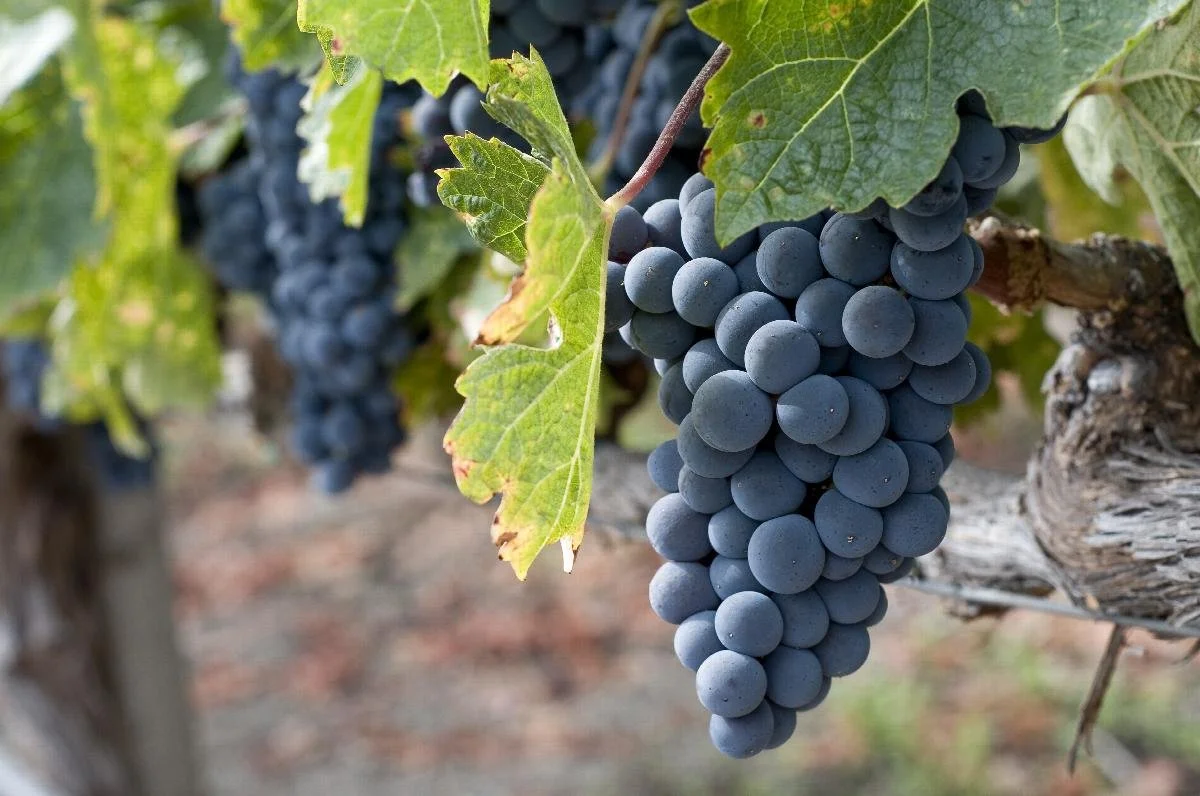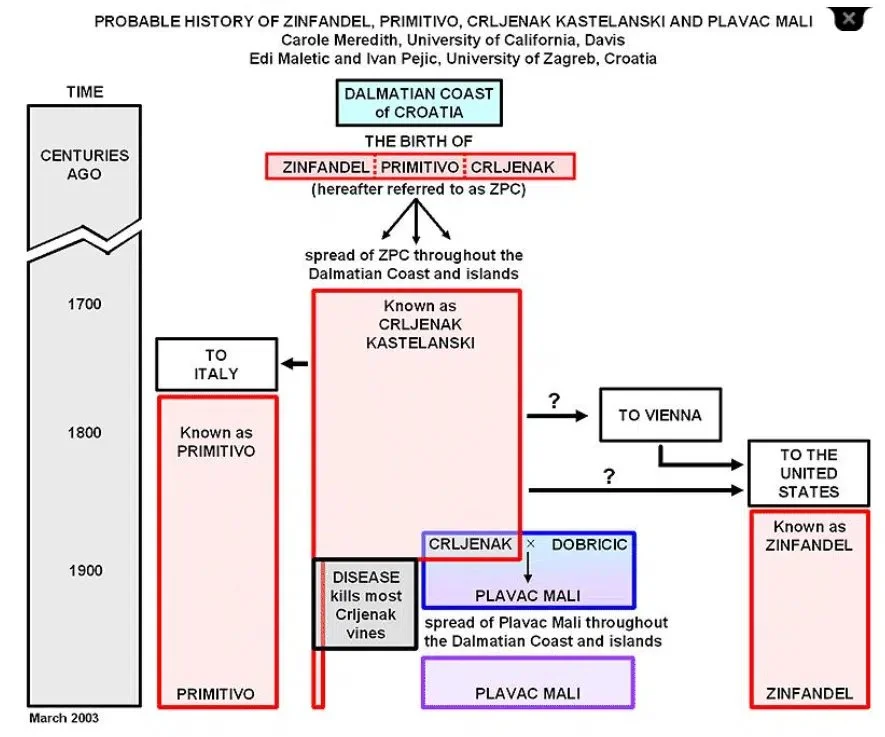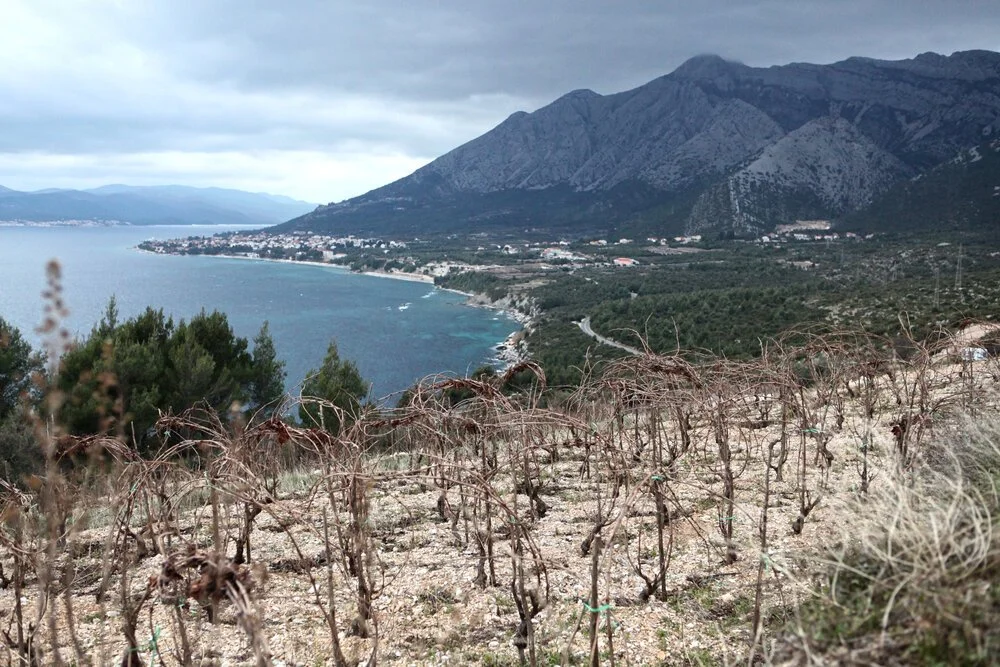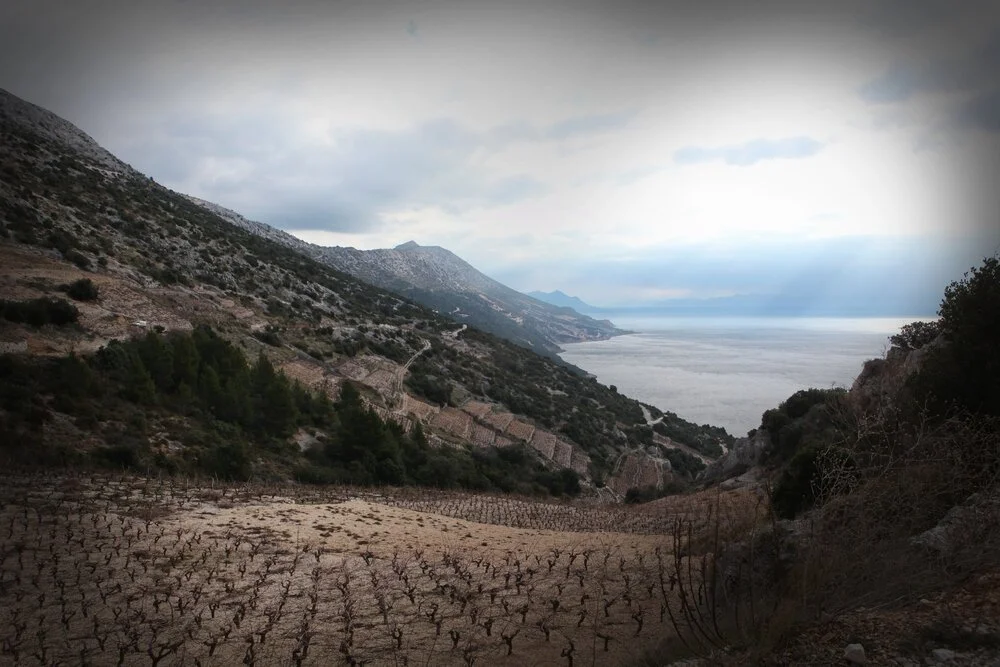
Employee Training Portal
Bura-Mrgudić
“Basina” Tribidrag (Zinfandel)
Located on the Pelješac Peninsula, near the Dalmatian coast, the Bura-Mrgudić Winery is run by siblings, Mare (Bura) Mrgudić and Niko Bura. Mare married into the Mrgudić family, bringing two Croatian winemaking bloodlines together. The tradition of viticulture and vinification in the Bura family dates back to 1860, though the family name was not established in commercial wine production until 1995. Today, Mare’s son, Boris Mrgudić, steps into the the role of winery operations to continue the next generation of the family’s legacy.
Zach, we know you love the “cork dorks” but, of all the places and all the grapes … why this one?
Zinfandel holds a very special place in the history of winemaking in the United States. Originally introduced here in America in the early 1800s, it made its way to California during the Gold Rush, between 1852-1857. With the abundant sunshine tempered by coastal climates, the grape thrived, and it would eventually become the most widely planted grape varietal in California by the end of the century. Though popularity declined during and after Prohibition, interest was revived in the 1970s — particularly with the introduction of “White Zinfandel” by Bob Trinchero of Sutter Home Winery, and with the esteemed dry, red wine production of Mike Grgich (a native Croatian). Today, it is still the third-most widely-planted grape variety in California.
Due to the popularity and historical significance of the Zinfandel variety, in the 1990s scientists and wine experts joined forces to uncover its mysterious origins. It was already suspected that there was a genetic link to the Italian variety Primitivo from Puglia.
With the help of DNA technology and a team of researchers from Italy and Croatia, Professor Carole Meredith, grapevine geneticist at UC Davis, led the research to discover the true origin of this iconic wine.
The findings were groundbreaking: a Crljenak old vine found in Croatia was genetically identical to Zinfandel, providing key insights to develop high-quality clonal material for future vineyards.
After the research, the grape variety called Crljenak, Pribidrag, and Tribidrag (its oldest name, dating back to the 15th century) experienced a renaissance and is today planted by many Dalmatian winemakers.
In 2001, a grape variety known as Crljenak Kaštelanski was discovered by chance in the cliffside vineyards of Kaštela, a town located in the Dalmatian region. The grape had been planted by winemaker Ivica Radunić’s father around 40 years prior, using bud wood that originated from a vineyard planted by his grandfather even earlier. Interestingly, the name of the grape – which translates to “black grape of Kaštela” – appeared to be a locally-referenced name that had developed over time.
In 2002, the intention was to seek more clues about Zinfandel’s origin. During a visit to a vineyard in Omiš, a team made an interesting re-discovery when they came across a grape that bore a striking resemblance to Zinfandel.
However, the locals referred to it as Pribidrag, which closely resembled the name Tribidrag mentioned first in 15th-century literature.
Further research revealed that Tribidrag was actually a highly regarded court wine during the period of Venice’s dominance in the Mediterranean, which sheds light on the historical significance of the grape.
Although, once one of the most planted grape varieties in Dalmatia, during the late 19th century, in its country of origin, the variety began to be neglected. Especially after the arrival of downy mildew, powdery mildew, and phylloxera from America.
After Apulia, Crljenak, under the new name Zinfandel, in the early twenties of the 19th century, was brought to the US, from the Imperial State Nursery in Vienna.
Back in the day, Imperial State Nursery housed numerous varieties planted along the Austrian-Hungarian monarchy. Within a few decades, Zinfandel became the most planted and popular American red grape variety.
While the names Primitivo and Zinfandel were first mentioned in 1799 and 1837, respectively, references to Tribidrag can be traced back to the 15th century.
Etymologically, the name Tribidrag is derived from the Greek language and translates to “early ripening.” Similarly, the Italian name for this variety, derived from the Latin language, is primativus, which means “the first to ripen.”
THE BURA WINERY
Located on the steep 45 degree Southern slopes of Pelješac Peninsula known for its big reds, Bura vineyards produce the most unique, delicious and prestigious wine to ever come out of the Dalmatian Coast. As much as there is talk about all the different wineries and winemakers in Croatia, no other winemaker stands out more than Niko Bura and his sacred Bura Dingač. Niko Bura’s vineyards are fully organic and are the truest expression of the microclimate and land of Croatia’s southern Dalmatian coast. The Bura family has one of the longest traditions of winemaking in Dingač and Croatia as a whole, spanning over sixteen generations -- since the year 1410!
Crljenak (locally called here, as Tribidrag) is known to thrive in the Dalmatian region, particularly on limestone soils and hilly terrain. In this region, many vineyards are situated on steep slopes which allows for wind exposure and increases soil’s salinity due to nearby sea influence.
The result is a unique flavor profile in the wine. Crljenak grapes also possess a higher tannin content, as they ripen relatively early, requiring fewer sunny hours to develop a high sugar and acidity level.
2020 vintage
100% Zinfandel (Tribidrag)
Vineyards are farmed by the Bura and Mrgudić families in the Peljesac peninsula, the region of Dalmatia, Croatia
Extremely steep vineyards require all vineyard work to be done by hand
Winemaking: destemmed entirely, native yeast fermentation
8 days maceration;
6 months aging in 225-liter used French oak barrels, coarse filtration, one year in bottles before release
ABV: 13.5%
Organic farming; family-owned and small production (2000 bottles, annually)
Tasting Notes: This Tribidrag wine comes from a renewed famed vineyard site with indigenous croatian varietal Tribidrag / Zinfandel / Crljenak on the west end of Peljesac peninsula. Grapes were picked in August, during early mornings. This wine is powerful yet elegant with great freshness and drinkability. Rich, deep and fruity wine with softer tannins and light complexity.
Food Pairings: Enjoy it with stews, red meat roasts, wild fowl, venison, roasted lamb and potatoes with rosemary and Dalmatian herbs, cured meats, hard and aged cheeses, grilled steak meats, burgers, and grilled blue fish.








